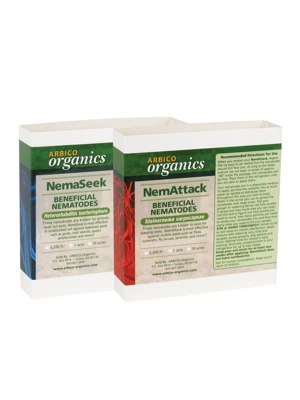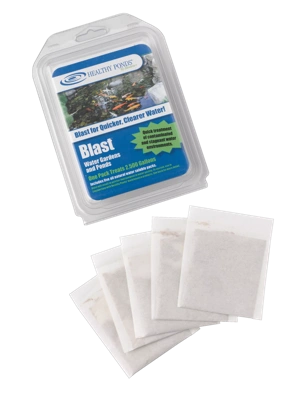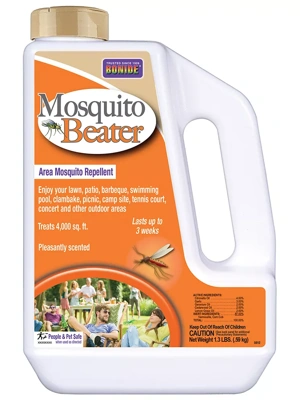Most Bugs are Good Bugs
Most Garden Visitors – More Than 95% – Are Either Beneficial or Benign
When you're deciding how to manage pests in your garden and landscape, keep this in mind: First, do no harm. The vast majority of garden visitors are either helpful or harmless. Get on a first-name basis with as many of them as possible.
Ladybugs, the darlings of the garden, are easy. What other insect do you see emblazoned on t-shirts, garden clogs and kids' pajamas? Sure, ladybugs are beneficial, eating the aphids that might otherwise overwhelm our plants, but if being beneficial is all it takes to become a garden icon, why don't we see parasitic wasps and spiders embroidered on kids' clothes, too?
Let's face it: Ladybugs are popular because they're cute. And we all know not to harm them when we see them on plants. But what most folks don't realize is it's their larvae that do most of the aphid-eating. Do you know what they look like?

Ladybug larva, right, are not especially cute, but they are major aphid eaters. Don't squish these good guys.
How many ladybugs have had their lives cut short because gardeners thought the homely larvae were pests? The point: Learn to identify the insects and other creatures that inhabit your garden — including all their life stages. (The other point: Beauty is only skin deep.)

An adult lacewing, left, and the larval form.
Lacewing larvae won't win any beauty contests either, but they rival ladybug larvae in the aphid-eating department.
If you like butterflies (and who doesn't?) then you should know that their larvae are caterpillars. That means that any pesticides you apply to kill the caterpillar pests (like those cabbageworms eating your broccoli) will also kill butterfly larvae. Learn to identify pest caterpillars, including their eggs, and remember that you can manage many pest caterpillars by hand picking or using row covers to prevent adults from laying eggs in the first place. Use pesticides as a last resort — even organic ones.

If you love monarch butterflies, leave their larvae, right, to munch on milkweed.

If you want black swallowtail butterflies in your garden, share some of your dill, parsley and fennel with their larvae.
Upwards of 95 percent of creatures in our gardens are either beneficial or benign. They go about their business, which may include eating other insects, breaking down organic matter and pollinating flowers.

Dragonfly
The pest eaters: In addition to ladybugs, other beneficial insects that help control pest insects include dragonflies; parasitic (non-stinging) wasps; tachinid and syrphid flies; and the colorfully named damsel, assassin and big-eyed bugs.
The decomposers: These are the Rodney Dangerfields of the garden ? they don't get no respect. Centipedes, sowbugs and ground beetles break down organic matter, helping release the nutrients to garden plants, and keep us from becoming buried under mountains of fallen leaves.
The pollinators: Bees, moths, butterflies, wasps and beetles all play a role in pollination. And a garden without pollination is a garden without pumpkins, squash, cucumbers, melons, blueberries, apples and nuts, to name a few pollinator-dependent crops.

If you want pumpkins, make your garden hospitable to pollinators, such as these bumblebees.
If you go out of your way to nurture and protect these harmless garden visitors, they'll return the favor by keeping pests in check, pollinating your plants, and entertaining you with their activity.


Toads and spiders help keep insect pests under control.
More "Good Guys"
Be sure to welcome these pest-eaters to your garden:
- Toads: You'll have fewer slugs if toads are in residence.
- Spiders: Spiders control aphids, caterpillars and other insect pests.
- Bats: Most species consume huge numbers of insects every day, and others are important pollinators.
- Birds: Most backyard birds eat a combination of seeds, berries and insects. But in late spring and early summer, birds are busy filling the mouths of their hatchlings, and baby birds like nothing better than freshly caught bugs. Attempt to eradicate insects from your landscape means you'll see fewer birds.
Last updated: 03/13/2024
Print this Article:
Related items
Get the Dirt
Stay up to date on new articles and advice. Please fill out the information below.







